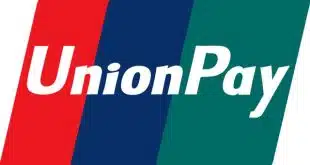It’s a double whammy for VeriFone Systems Inc. On Monday, the San Jose, Calif.-based terminal maker said its sales for next year will be “tempered” by a decision by the major payment networks to postpone their deadline for fuel-pump EMV from Oct. 1, 2017 to Oct. 1, 2020.
“We were disappointed and somewhat shocked at the three-year delay,” VeriFone chief executive Paul Galant told analysts during an afternoon conference call to discuss the company’s results for its fiscal fourth quarter, which ended Oct. 31, and for the full fiscal year.
Three months ago, VeriFone said its results were hurt by decisions by Visa Inc. and MasterCard Inc. to ease the chargeback burden for merchants that had not activated EMV terminals.
As a result of the fuel-pump EMV extension and foreign-exchange headwinds, VeriFone predicted its non-GAAP revenue for its fiscal 2017 first quarter will come in at $450 million, down from $468 million in its latest quarter. The fourth-quarter result represents a continued downward drift in revenue from $493 million in the third quarter and from $514 million in the fourth quarter a year ago. North American sales finished the quarter at $171 million, down from $196 million in the third quarter and $230 million in the same period in 2015.
“The key message is EMV will continue to be a key part of our business for the next several years,” Jennifer Miles, president for North America, said during the analyst call. “The entire market was surprised at the duration” of the postponement of EMV for fuel pumps, she added.
But Galant was optimistic about the prospects for VeriFone’s Engage platform refresh and Carbon smart-terminal programs, as well as for its Point services program. He predicted between 5% and 10% of all VeriFone device sales will come through the Engage platform by the end of fiscal 2017. He added 5 million terminals in the U.S. market remain to be upgraded for EMV. “Hospitality represents the largest of these greenfield opportunities,” Galant noted.
And when petroleum retailers are ready to deploy EMV at their pumps, VeriFone will reap the sales, Galant promised, pointing to a relationship the company has built with pump manufacturer Gilbarco. “Despite the recent decision, we still believe we are well-positioned to capture a significant revenue opportunity over the next few years. Those economics will go our way,” Galant told the analysts.
For the quarter, services represented 44% of VeriFone’s revenue, up from 34% a year ago. The company’s gross margin finished at 39.5%, down from 43.4% in the same quarter last year.
For the fiscal year, VeriFone posted $2.006 billion in non-GAAP revenue, up slightly from $2.001 billion in fiscal 2015.




